Auke Visser´s Esso France Tanker's site | home
The Doppler Sonar in the Maritime Industry
Photos and report © 2008: Joachim Paul, DJ7WL
"Esso Languedoc" / FNLX test drive
Super tanker "Esso Languedoc" / FNLX built in 1973 on the AG Weser shipyard. In addition to many other systems on board the Debeg is also the docking Doppler sonar system for this ship delivered, installed and put into operation. Since I was the project leader, got Me too participated in the test drive of the vessel and in addition to many other works also the Doppler sonar system calibrated during the test drive.
These supertankers can carry out the required mileage runs only on the high seas, therefore the system using the Debeg Decca Miles speedsystem is calibrated. In the later conducted maneuvers by full ahead to full back was the Doppler used system for the determination of the complete stop of the vessel above the ground after the braking.
For these "braking", a super tanker needed about 15 minutes and a distance of about 2 miles. Then the sea around the ship is totally upset and "see in the water" the standstill can hardly notice.
|
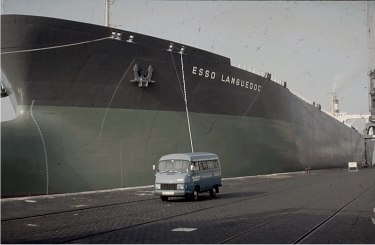 |
©s/paulnw.jpg"
|
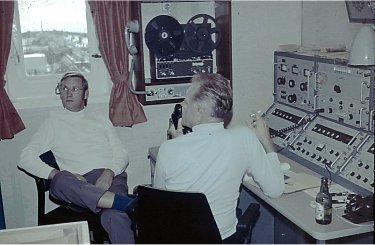 |
Above: At the pier "AG Weser"
Below: Anchor manoeuvre during the test drive of the shipyard
|
Above: The radio room during the test drive of the shipyard
Below: The radio station complete
|
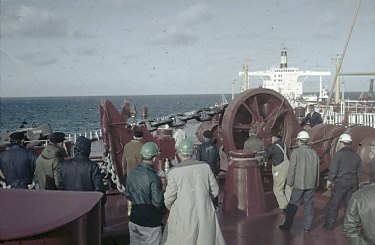 |
©s/paulnw.jpg"
|
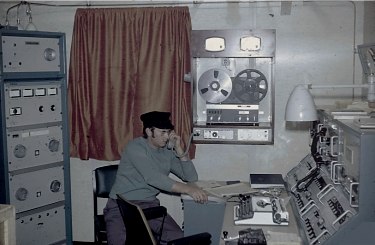 |
Below: The bridge of the "Esso Languedoc"
|
Below: Look at the wireless frame
|
|
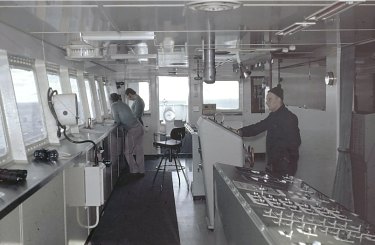 |
©s/paulnw.jpg"
|
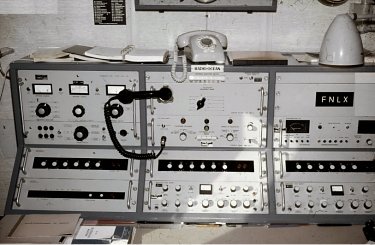 |
The "Esso Languedoc" is later Very much known, because it succeeded on this ship for the first time, a so-called "Monster"- or "Killer wave" to photograph. To do this, you will find information in many languages on the Internet.
"Esso Languedoc" / FNLX: drive from Cape Town to the Persian Gulf
The Doppler sonar system has long worked to the satisfaction of the crew and good. Then there was the error but that the rear cantilever has failed.
The ship's crew and the shipping company have presented the immediate repair as very much urgent, because the system for the maneuvers in the Persian Gulf is very much important. The ship was located at that time off the coast of West Africa on a trip via Cape Town to the Persian Gulf and here after Saudi Arabia to the oil port of RAS Tanura.
We got well packed on the way a new dual axis Schwinger to Cape Town and I flew from Hamburg via Frankfurt and Johannesburg to Cape Town. Together with the agents in Cape Town we have chartered a helicopter to 40 miles at sea brought me, and all-inclusive swing gently right on the deck of the "Esso Languedoc" set off.
|
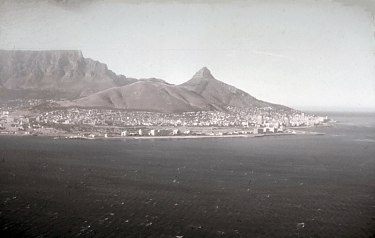 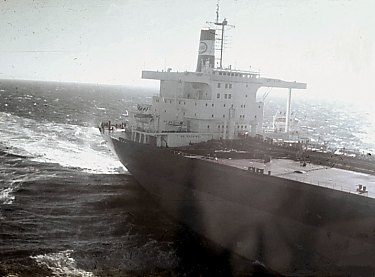 |
©s/paulnw.jpg"
©s/paulnw.jpg"
|
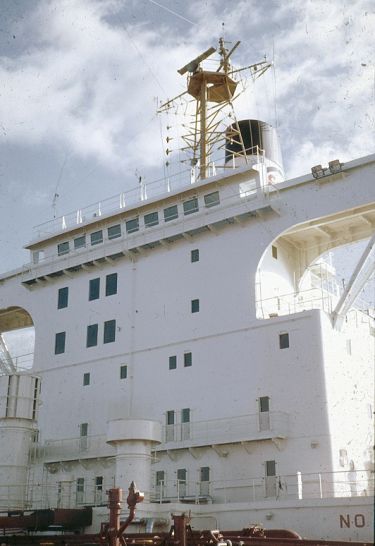 |
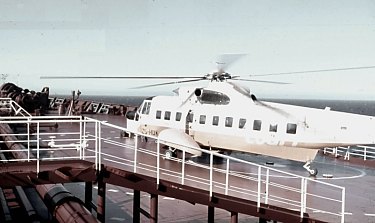 |
©s/paulnw.jpg"
|
Top left: Look back at Cape Town
Left Center: Approach on the "Esso Languedoc"
Top: Look up to the bridge
Links below: Landed on deck
|
Replacement of the defective transducer
Described as already described earlier in the order we have expanded the defective tube and then installed the new wavers. The new cantilever was then carefully aligned on the stainless steel counter. The captain and the officers were Very much interested in the good function of the Doppler sonar. Therefore, the first officer even when the replacement of the oscillator personally worked with.
|
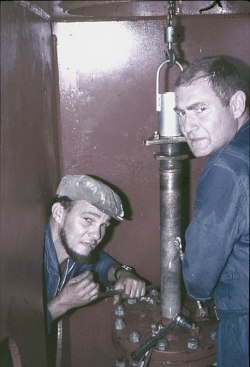 |
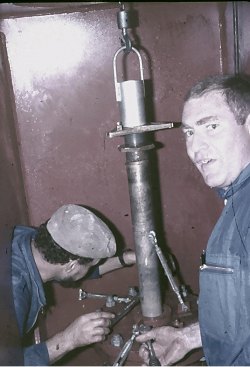 |
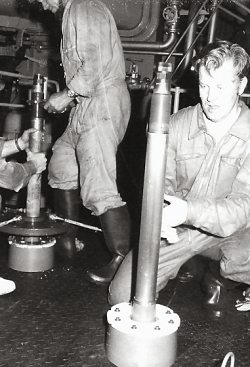 |
Photos above: replacing the defective transducer and work on the oscillator.
|
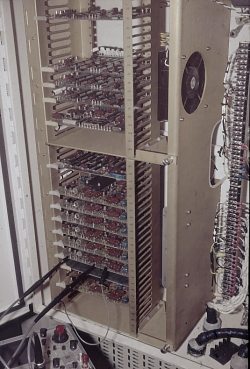 |
©s/paulnw.jpg"
|
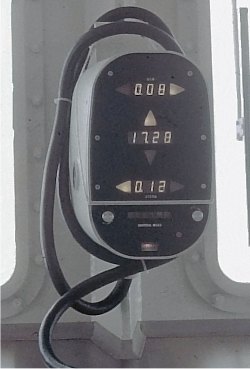 |
The function of the Doppler was measured with the dual-beam Oscillographs then sonar device.
Photo left: Measurements with the dual beam oscilloscope on the electronics unit
Photo left: The display after successful repair
All contributors to the exchange of the oscillator were delighted: the docking Doppler sonar device to function correctly. The captain gave a round for lunch.
|
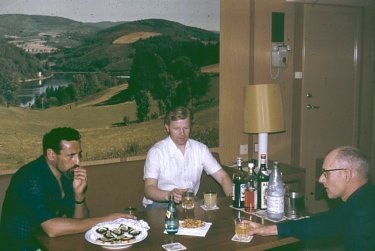 |
©s/paulnw.jpg"
|
Links: At the captain's table
Yet, an explanation is required for this image. Some time ago, an Esso tank ship hit an island in the night. Action was noted in the Seeamtsver-that the ship's crew had created "negative grid bias" in copious measure, what then was the cause of the emergence. As a result, that alcohol in all Esso ships was strictly forbidden. During a ride on German Esso ships I was asked every time when logging on board if I had alcohol in. If so, this was submitted and only returned upon departure.
But we were here on a French ship of Esso and there was told an exception is made for special occasions. Now, the successful repair was such an exception.
|
The next day, there was a drink before lunch again. Yes, today the third officer's birthday, so it was but an exception! Now one suspects already as it goes on, on all 14 days, which I was on board, an exception was found.
The rest of the time to the Persian Gulf was now less exhausting, however, was the proper function of the Doppler sonar carefully and critically followed by the captain and the officers and the function recorded in the logbook. Here in the Indian Ocean, we were Of course constantly in the water track mode. The switch will take place again on the Bottom Track at the entrance to the Persian Gulf to the Strait of Hormuz.
|
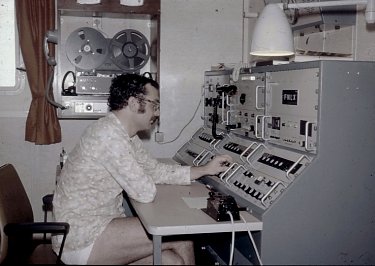 |
©s/paulnw.jpg"
|
I have let me see now more often when the radio officer. An advantage of the radio station on Board was that are the main transmitter also outside half of the amateur radio bands operate. I knew that already from the test drive here. Therefore, I had agreed with neighbouring radio amateurs, power amplifier using a good directional antenna and a KW, contact at certain times. That worked then also Very good, most of the time the connection was in SSB telephony in the 15-meter amateur radio band ok sometimes I've been active on 20 meters. Whether the operation than DJ7WL/mm in the form was legal, is not clear to me. There was already a CEPT agreement between France and Germany, which regulates it. But, for the operation of Board a French ship from?
The contact round of the German ships had good track with the plant. So I was pleased to welcome by the "Esso Languedoc" even A few famous radio officers on German vessels.
Links: The radio chassis the "Esso Languedoc" / FNLX
|
For the movement on board there to operate the way the trim room, or to undertake tours of the ship.
|
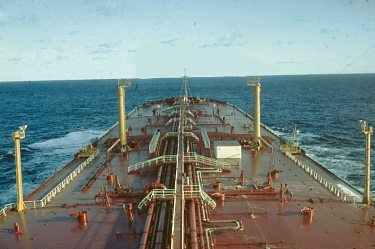 |
©s/paulnw.jpg"
|
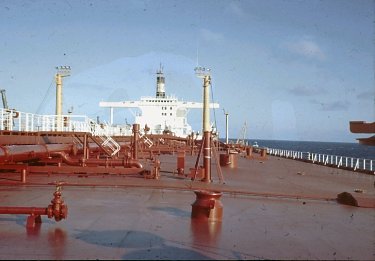 |
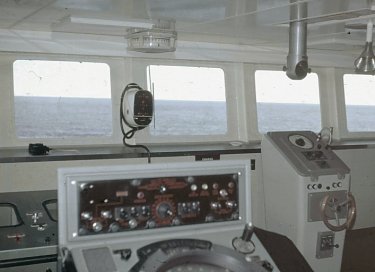 |
©s/paulnw.jpg"
|
Top left: View from the bridge to the bow
Top right: Panoramic view from the bow to the bridge
Links: Part of the bridge with the display unit of the Doppler sonar system between the two left Windows.
The tanker "Esso Languedoc" passed its orbit now continues to Madagascar and the Comoros on the direct way to the Strait of Hormuz. The Board's routine was performed: observe the system, measurement protocol result, etc. But about half way to the Strait of Hormuz, and In the morning at 04:00 I was picked up by phone from the bed. The system showed no more speed. On the main electronics unit, a dual beam oscilloscope to the relevant measurement points for received echoes has been connected: no echo to see, only noise.
The AGC (automatic gain control) voltage was measured. The maximum gain was set by AGC.
|
The send-control pulse were also fine. Then it went throughout the ship to the front connector box. Here, the transmitting power was measured: ok.
The same on the rear junction box in the engine room. And now? No error was detected, and still the system does not work! Back of the oscilloscope was connected to the main electronics unit back on the Empfangsmesspunkten. Captain and emmermann officer looked at me, but I had also no explanation for the failure of the system.
But what was that? On the oscilloscope, a tiny echo was to see, which was gradually getting stronger. The AGC start and fixed gain in proportion to the signal down. Shortly after that the signal was back to normal and the speed keitsanzeige in order. No one had an explanation for the behavior of the system. Later, and back in Hamburg, I found an explanation in a documentary that described measurements in the Indian Ocean. Then fall, Very much localized, in the early hours of the morning the airborne particles in the water on a deeper level. This case has not occurred on all my future trips and tests and also the manufacturer of the plant has never observed this effect.
The shipping was Very much active in the Strait of Hormuz. Here we got the ground again with the system and that the reckoning was Very much accurate. Our route took us directly to the RAS Tanura oil management and charging station before Saudi Arabia. At the Anlegemanöver on an artificial island the Doppler showed Very much exactly the movement of the vessel in all axes sonar us. My task was ended. It was still a complete log file created and signed. By boat it went ashore and continue by car to the airport to take the return flight.
|
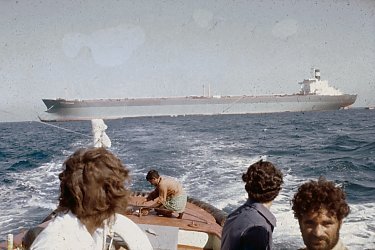 |
©s/paulnw.jpg"
|
 |
Top: Look back at the party above: the ride to the airport
Conclusion
In contrast to many communication and navigation procedures in the maritime industry, No more used, Sonar is installed many Doppler in the year 2008 equipment on ships. Specifications for these plants are here Doppler sonar system Very much similar. However, the 200 ppNM output of these plants has only a reserve function in the event that the GPS failed systems on board.
J. Paul, in February 2008
Thanks to : Stéphane Ori
|